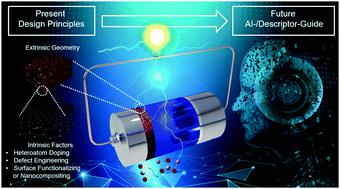当前位置:
X-MOL 学术
›
Energy Environ. Sci.
›
论文详情
Our official English website, www.x-mol.net, welcomes your feedback! (Note: you will need to create a separate account there.)
Electrocatalyst design for aprotic Li–CO2 batteries
Energy & Environmental Science ( IF 32.5 ) Pub Date : 2020-10-26 , DOI: 10.1039/d0ee03058a Zhen Zhang 1, 2, 3, 4, 5 , Wen-Long Bai 1, 2, 3, 4, 5 , Kai-Xue Wang 1, 2, 3, 4, 5 , Jie-Sheng Chen 1, 2, 3, 4, 5
Energy & Environmental Science ( IF 32.5 ) Pub Date : 2020-10-26 , DOI: 10.1039/d0ee03058a Zhen Zhang 1, 2, 3, 4, 5 , Wen-Long Bai 1, 2, 3, 4, 5 , Kai-Xue Wang 1, 2, 3, 4, 5 , Jie-Sheng Chen 1, 2, 3, 4, 5
Affiliation

|
Recently, a promising energy storage technology, high energy density rechargeable Li–CO2 batteries, has attracted considerable attention. Li–CO2 batteries are anticipated to mitigate the long-lasting greenhouse effect and simultaneously provide electric power. However, inferior battery performance due to large overpotentials, low cyclability and fast capacity degradation, which are mainly triggered by unsatisfactory electrocatalyst design, still bothers materials scientists. This article reviews the pioneering development of cathode catalysts in terms of corresponding intrinsic and extrinsic factors. Intrinsic factors, herein referring to the electronic structures of a substance and its electronic interactions with the environment, dictate the nature of the ‘building units’ of the material and can often be chemically tuned through strategies like heteroatom doping, defect engineering and surface functionalizing or nanocompositing. Extrinsic factors, referring to the physical geometry of materials, including morphology, porosity, size, etc., also require careful reflection since different geometric arrangements of the same ‘building units’ most likely result in entirely different battery performances. A systematic consideration of both the intrinsic and extrinsic factors is believed to further inspire beautiful designs of electrocatalysts for Li–CO2 batteries as well as other metal–air batteries.
中文翻译:

非质子锂电池的电催化剂设计
最近,一种有前途的储能技术,高能量密度可充电Li–CO 2电池,引起了广泛的关注。碳酸锂2电池有望减轻长期的温室效应并同时提供电能。但是,由于过大的电势,低的可循环性和快速的容量降低(主要是由于电催化剂设计不满意引起的)而导致的电池性能不佳,这仍然困扰着材料科学家。本文从相应的内在因素和外在因素方面回顾了阴极催化剂的开拓性发展。内在因素,在本文中指的是物质的电子结构及其与环境的电子相互作用,决定了材料“构建单元”的性质,通常可以通过杂原子掺杂,缺陷工程和表面功能化或纳米复合。外在因素,等等,也需要仔细思考,因为同一“建筑单元”的不同几何布置极有可能导致完全不同的电池性能。对内在因素和外在因素的系统考虑被认为可以进一步激发Li-CO 2电池以及其他金属空气电池的精美电催化剂设计。
更新日期:2020-11-05
中文翻译:

非质子锂电池的电催化剂设计
最近,一种有前途的储能技术,高能量密度可充电Li–CO 2电池,引起了广泛的关注。碳酸锂2电池有望减轻长期的温室效应并同时提供电能。但是,由于过大的电势,低的可循环性和快速的容量降低(主要是由于电催化剂设计不满意引起的)而导致的电池性能不佳,这仍然困扰着材料科学家。本文从相应的内在因素和外在因素方面回顾了阴极催化剂的开拓性发展。内在因素,在本文中指的是物质的电子结构及其与环境的电子相互作用,决定了材料“构建单元”的性质,通常可以通过杂原子掺杂,缺陷工程和表面功能化或纳米复合。外在因素,等等,也需要仔细思考,因为同一“建筑单元”的不同几何布置极有可能导致完全不同的电池性能。对内在因素和外在因素的系统考虑被认为可以进一步激发Li-CO 2电池以及其他金属空气电池的精美电催化剂设计。



























 京公网安备 11010802027423号
京公网安备 11010802027423号